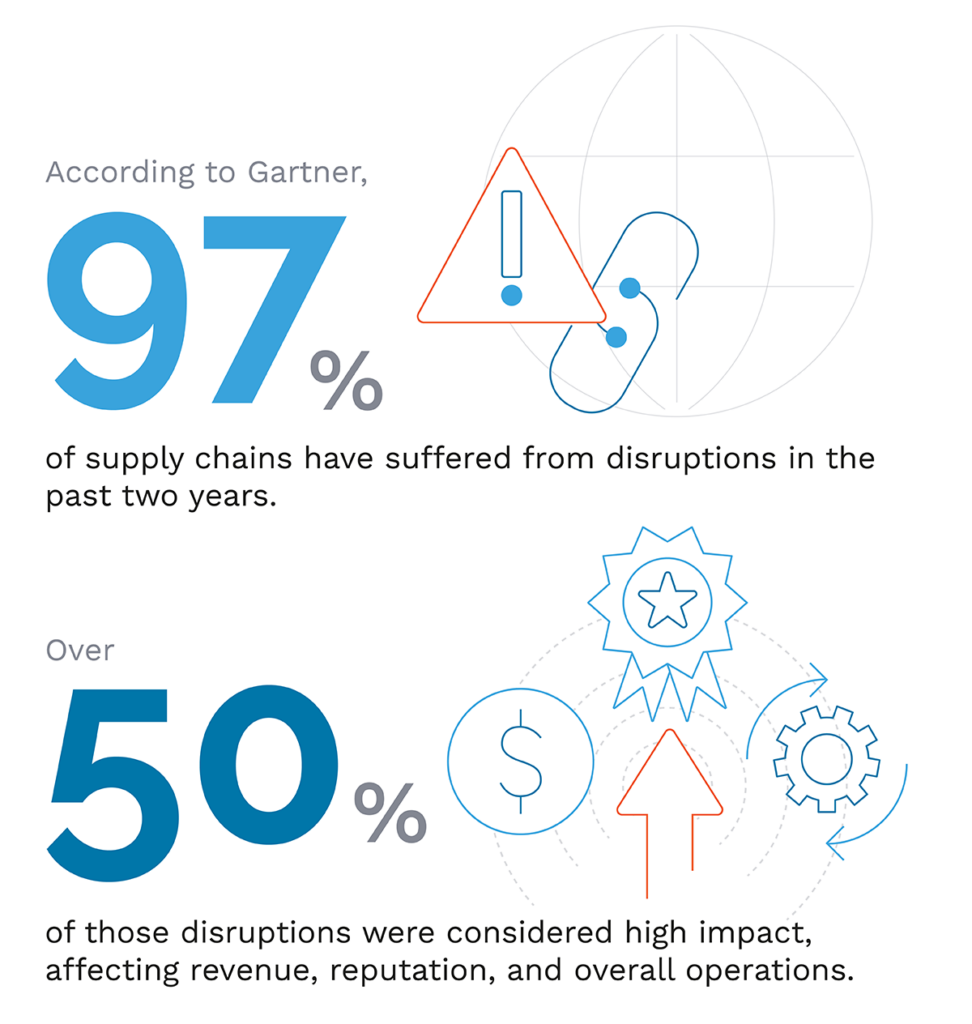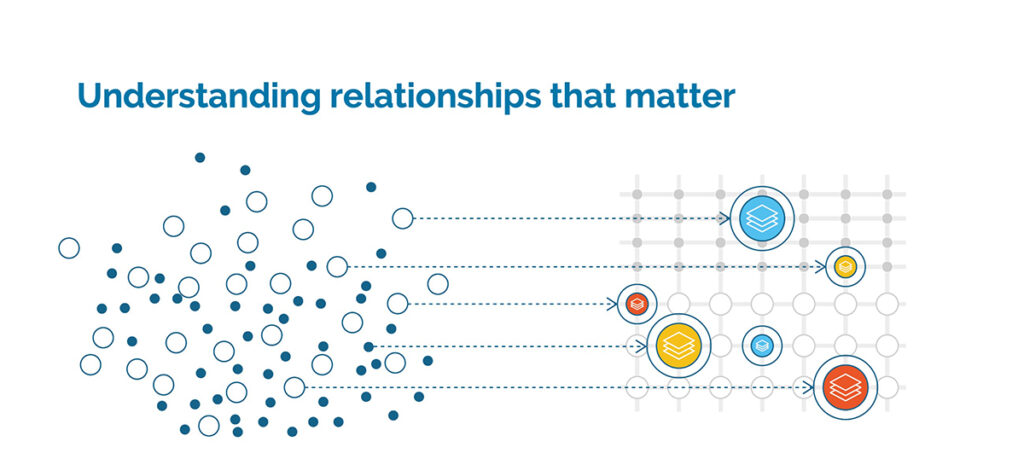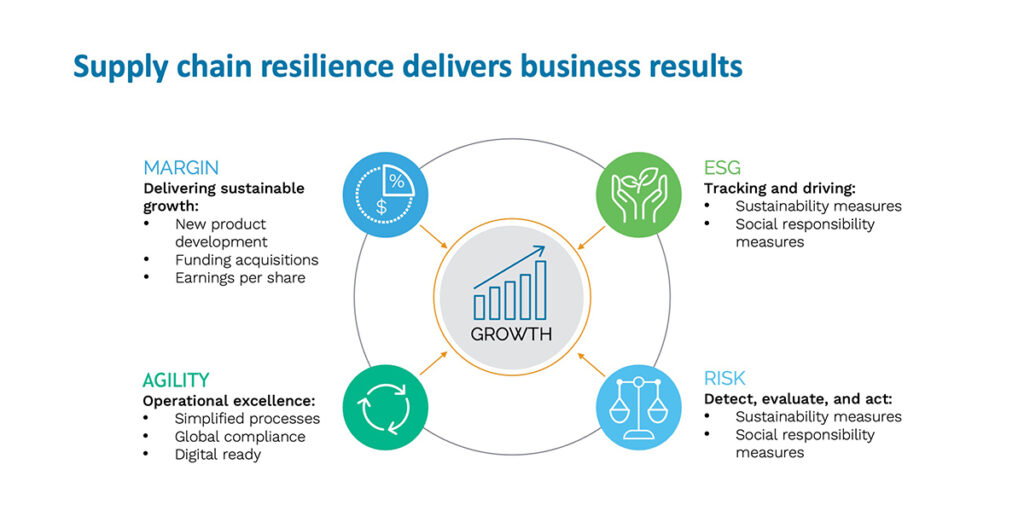Reliable, cost-effective logistics networks are the foundations of today’s global supply chains. The smooth flow of materials, components, and finished products around the world underpinned the rapid and virtually uninterrupted expansion of global trade from the mid-20th century to the first decade of the 21st.
Today, those foundations look less solid. The speed of the post-COVID-19 global economic recovery piled additional pressure on logistics networks that were still reeling from pandemic-driven disruption. Over the past years, supply chain managers have faced significant operational pressure. Capacity constraints in ocean and air freight have pushed transportation costs to historic highs. Congestion in major ports has dramatically extended end-to-end journey times. Companies have wrestled with significant shortages in logistics assets, such as shipping containers, and personnel, such as truck drivers.
Stresses elsewhere in the global economy have had spill-over effects on logistics operations, too. Shortages of critical components, notably semiconductors, have forced automotive and high-tech companies, for example, to adjust their production plans, pushing finely tuned just-in-time supply chains out of balance. Construction projects have been knocked off schedule by missing materials. Companies have scrambled to fill the gaps by sourcing from new suppliers in unfamiliar locations.
Click here to download the PDF

Figure 1: Supply chain orchestration mitigates the impacts of growing supply chain disruptions.
And while there has been no repeat of the mass-scale shutdowns and border closures that occurred at the beginning of the pandemic, the aftershocks of COVID-19 continue to cause localized logistics challenges. Temporary shutdowns of ports and other facilities for health protection reasons have joined a long list of disruptive events, including tornadoes, flooding, and other extreme weather events.
Strategic shifts
Even as operational challenges continue to mount, supply chain organizations are also being asked to respond to significant strategic shifts. Some of those were precipitated or accelerated by the pandemic. Supply chain resilience has become a key priority for many organizations, driving changes to inventory strategies and the diversification of supply sources. Direct-to-consumer shipping has seen dramatic growth after consumers switched from in-person shopping to online commerce during the crisis.
Other shifts were already underway. The pursuit of lower costs, greater responsiveness, or improved geopolitical stability are leading some companies to adapt their production and supplier footprints, sourcing from new global locations or adopting nearshoring or regional decoupling strategies. Others are looking for ways to reduce the emissions generated in their supply chains and logistics activities in preparation for the transition to a low-carbon or net-zero economy.
Flying blind
These challenges would be tricky enough on their own. But in many modern supply chains, effective decision-making is further hampered by imperfect information. Logistics networks are fragmented, with a mixture of in-house and outsourced management involving multiple service providers and stakeholders. That makes it difficult to assess the current performance of these networks against a full range of key performance indicators, such as speed, quality, cost, risk, and carbon emissions. Performance improvements are even harder to achieve. The attention of many supply chain teams is so focused on ongoing execution challenges that they have few resources left to evaluate optimization. This problem has been exacerbated by a handful of key factors:
- The increasing volume of data generated within the supply chain
- The challenges inherent in pulling disparate data sources together
- The difficulty of producing accurate results at a sufficient level of granularity and timeliness to make them meaningful and actionable.
We exist in an era where the availability of supply chain and transportation data is no longer in question. But being able to analyze, interpret, and manipulate that data, then act quickly upon the results, is something that many companies still struggle to achieve.

Figure 2: Human and AI analysis combine for the most effective approach to supply chain orchestration.
Time for a clearer view
Some companies are now overcoming traditional blind spots in their logistics planning and operations with a new technological approach known as Supply Chain Orchestration (SCO). They are combining multiple data sources into a supply chain data lake, or “digital twin,” and using advanced analytical and scenario modeling tools to generate new insights on current and future logistics network performance.
For the first time, this approach gives companies the ability to manage and optimize complex, fragmented supply chains in a unified way. By creating full transparency and offering rich contextual information, SCO allows companies to compare the performance of different providers against multiple KPIs. This helps them focus management attention where it matters most and identify opportunities for optimization and improvement. SCO tools even let companies conduct what-if analyses to explore the likely impact of changes in logistics network design or operation. SCO is a powerful tool for operational decision-making too. With a single view of their end-to-end logistics operations, managers can spot potential issues earlier, and find the best solutions faster.
The case for supply chain orchestration
Supply chains, and particularly the transportation elements of them, involve many stakeholders, both internal and external. Internal departments involved in supply chain activities include finance, procurement, governance risk and compliance, customer and supplier relationship management, and manufacturing. External partners might include a range of suppliers, distributors, carriers, third- and fourth-party logistics providers, sub-contractors, and customers. Each of these internal and external parties may use their own, disparate, IT solutions. This presents a significant hurdle for companies looking to optimize their transportation operations, whether operationally (managing inbound, outbound, returns, etc.) or strategically (evaluating how changes to their operations might create benefit in terms of cost reductions, lower carbon emissions, or improvements in customer service).
SCO technology provides a mechanism to break down the barriers in supply chain data, allowing information to be combined, analyzed, and shared to the benefit of all participants. The rewards of being able to undertake this analysis are many. First, shippers can forge stronger and closer relationships with their carriers, 3PLs and 4PLs, ensuring everyone shares the exact same data and using it to formulate, evaluate, and deliver realistic outcomes from operational decisions.
In addition, shippers can accurately analyze changes to their own operations without the need to deploy a full operational Transportation Management System (TMS). Of course, in doing so it may also provide the basis of a business case justifying a TMS. Those shippers that don’t see logistics as a core capability can use orchestration to measure the performance of their service providers accurately and ensure all efficiencies are being realized. For carriers, 3PLs and 4PLs, orchestration provides a collaborative-yet-non-disruptive means by which to challenge the customer’s existing operations and find improvements. This proves the value of the logistics provider’s expertise as a means of competitive differentiation, thereby ensuring customer retention.
How supply chain orchestration works
The basis of SCO technology is a cloud-based software platform that combines multiple sources of data from different supply chain participants. That might include shipment and demand data from an organization’s internal resourcing planning and forecasting systems; operational, performance, and cost data from external service providers such as third-party logistics organizations or transportation companies; and relevant information on weather conditions or supply chain risks from external providers.
Importing and integrating these various data sources is automated, with regular updates ensuring that organizations always base their decisions on the most up-to-date information available. Update frequency depends upon the organization’s operational requirements and the availability of new source data. Delivery status information from a third–party logistics provider might be updated every few minutes, for example, while new information on marine vessel movements might only be available every few hours. The data used to model changes in the supply chain network or operations, on the other hand, might be handled more periodically.
Click here to download the PDF
The orchestration system uses this rich and granular data in several different ways. It can provide detailed dashboards to operational supply chain management teams, allowing them to see the overall status of their logistics networks at a glance, or to drill down into the details of specific lanes, nodes, or shipments. It can monitor supply chain operations and automatically trigger alerts for shipments at risk of delay, or when KPIs deviate from agreed levels.
Beyond the obvious operational benefits offered by greater transparency, the real power of SCO comes from the application of advanced analytics tools to derive new insights from the data. Companies can use these systems to compare the relative performance of different logistics providers against multiple KPIs, for example. They can identify opportunities to improve logistics performance by aggregating or disaggregating flows, or switching transport providers, modes, and routes. And they can conduct scenario planning using sophisticated what-if analyses to evaluate potential changes to logistics operations or network design, such as seeing the impact on the transportation cost and service levels if customers widen their delivery windows.
“By integrating shipment data into a single platform, transportation orchestration provides the ability to rapidly evaluate potential changes to your logistics operations and measure their impact in a real and meaningful way, all without causing disruption to your day-to-day business,” says Dominic Regan, Oracle’s Senior Director for Logistics Applications. “This allows companies to tap into new areas of savings beyond those available from deploying the more traditional operational TMS.”
See an example of how Supply Chain Orchestration can complement more traditional transportation management in this video from Oracle
The combination of rich, timely data and advanced analytics capabilities translates into real value for companies. SCO improves control, allowing companies to operate external or hybrid logistics networks as if they were in-house. It gives them the power to optimize their logistics networks from end to end, regardless of the scale of those operations or the number of entities involved. Improved transparency on costs and network performance informs negotiations with external providers and aids the identification of improvement opportunities.
SCO cuts through complexity too, allowing management resources to focus on the parts of the network that face the greatest risks, or which offer the biggest improvement opportunities. It allows data-driven decision-making as companies seek to balance logistics costs, risks, and environmental impact.
Supply chain orchestration in practice
In the United States, DHL Supply Chain provides SCO services as part of its role as lead logistics provider for several major manufacturing companies. The global and North American contract logistics leader has been working with orchestration technology for some time, but Jason Gillespie, Senior Director of Continuous Improvement and Innovation at DHL Supply Chain, says that the COVID-19 pandemic was a catalyst for rapid, large-scale implementation of the approach.
SCO proved its worth in multiple ways during the crisis, says Gillespie, as customers did whatever they could to keep production lines running despite extensive disruption to supplier operations and logistics services. “At some points, we were even sending logistics personnel to ports to remove components from containers and transfer them to air freight,” he says.
Orchestration technology has also helped to drive a more fundamental change in the relationship between supply chain participants, Gillespie says. “Because everyone involved was using the same data, and often looking at the same dashboards, this technology helped us to work together more effectively, finding collaborative solutions in extremely difficult circumstances.”
Gillespie believes that this increased level of openness and collaboration will be a positive legacy of the pandemic. “I think people have seen that the benefits of the approach far outweigh any concerns they might have about sharing granular operational data,” he says, adding that a growing number of existing and new DHL Supply Chain customers now have plans to adopt the technology.
Supply chain orchestration for resilience
One area where SCO delivers significant value for many organizations today is improving supply chain resilience. By incorporating data on risks and disruptive events from Everstream Analytics, leading organizations have been able to improve the robustness of their planning, optimize their costs, and accelerate their response to operational issues.
One global consumer goods company, for example, uses detailed weather forecasts and temperature data from Everstream to optimize asset selection for transporting perishable goods. Picking the most cost-effective cold chain equipment for each shipment has saved the company around $2 million every year while eliminating product losses through spoilage. Reducing the need to freeze loads also saves time and cuts energy consumption in its logistics operations.

Figure 3: Supply chain orchestration contributes to business growth in four key operational areas.
Chemical and pharmaceutical companies use Everstream’s data to identify potential logistics delays before loads are shipped. Flagging risks early allows these companies to optimize load planning and ensures that their logistics control towers closely monitor any ongoing threats to on-time delivery.
Another company in the freight management sector applies technology and Everstream data to optimize its planning processes. The company uses a machine learning model that analyzes more than 60 variables to predict the risk of on-time delivery of specific loads up to two weeks before departure. By allowing staff to focus their attention on shipments flagged as “high risk,” the system has reduced planning costs, improved service levels, and saved the company an estimated 11,000 hours of employee time every year.
As logistics networks become more complex and critical, companies need to move from a reactive to a proactive management approach. SCO technology provides the data and analytical capabilities necessary to optimize network design and shipment planning. By combining a company’s own detailed transportation data with external data sources encompassing areas such as supply chain risk, decisions can now be based on empirical data rather than “gut feel.” And because SCO incorporates every supply chain participant, it paves the way for a more collaborative approach to logistics management, in which different supply chain participants work together to overcome challenges and deliver the highest possible level of performance.
Ulf Venne leads the global Center of Excellence for Everstream Analytics. For over 10 years he has helped companies improve supply chain risk management, publishing articles and white papers on tools and methodologies for supply chain resilience, agility, and sustainability.